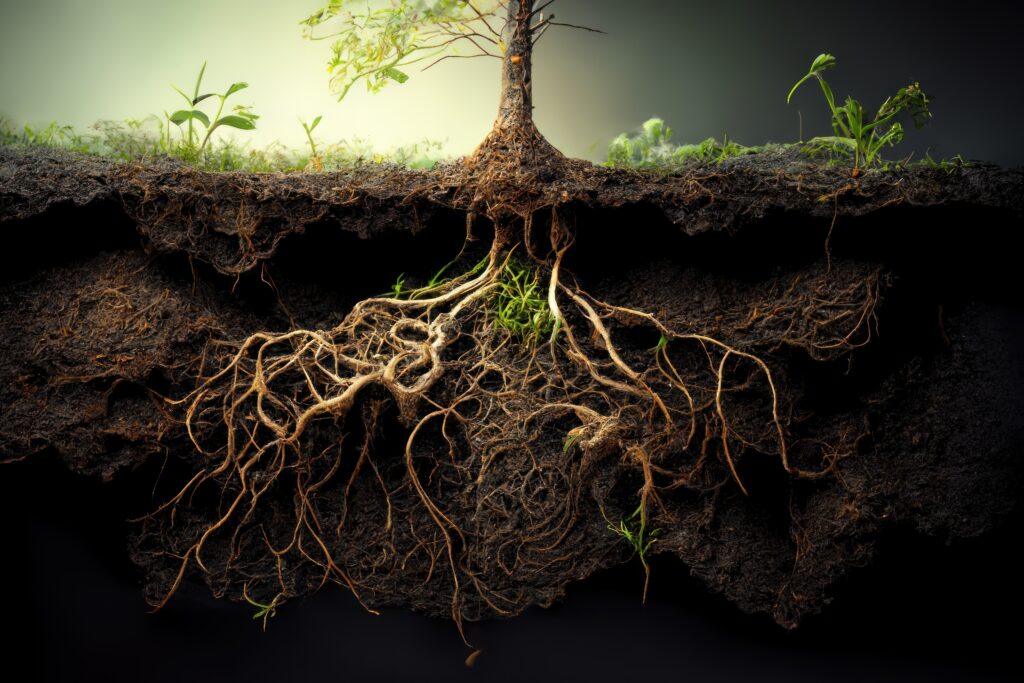What is the moral and practical stance on claiming existing sequestration assets when developing a new project?
This is a hotly debated topic of discussion in Elder Creek’s Carbon Lab.
We will start by saying the carbon purists on our team hold a hard “NO” on claiming any existing assets as we must make landscapes’ carbon balance on their own, without subsidization. Nuanced arguments will follow at the bottom of the blog post.
Given how hard it is to carbon balance a project, we are always looking for ways to increase sequestration. The pressure we are all facing naturally creates an ethical challenge that we must stay on the right side of to be anything more than a charlatan.
What is a Sequestration Asset?
An Asset is anything that sequesters carbon. Generally, it is plant material but can be wetland systems, soil systems etc. For this discussion, let’s use the examples of trees and meadows.
What exactly are you talking about?
As we develop a site, we make decisions about what lives and what does not. Whether it is tree removal or losing ground to structures or hardscape, it is important to note that at Elder Creek, we don’t see a field as “empty” space. This is a natural system providing ecosystem services. Carbon sequestration, water filtration, soil building insect habitat, just to name a few.
When we develop a site, we must take into account how we treat this ecosystem and record it as a net gain or net loss in terms of carbon, insectary, and water impacts.
We use Bond to calculate the carbon effects of removing this ecosystem.
But if we choose to keep this ecosystem do we get to claim its carbon sequestration benefits? That is the question at hand.
To answer this we edge into the conversation of carbon credits. Another blog will dive deeper into the complexities of the carbon credit system.
Who gets to claim what? How do we track what has been claimed?
Furthermore, doesn’t the earth get to claim its own systems? On what grounds do we legitimately claim carbon credits for existing natural systems?
Questions we ask in *Elder Creek’s Carbon Lab
Who gets to claim what? How do we track what has been claimed?
Furthermore, doesn’t the earth get to claim its own systems? On what grounds do we legitimately claim carbon credits for existing natural systems?
We consider the debate ongoing and revisit it at every project.
Here is where we have landed thus far;
- Trees and wild meadows are the most common natural systems we impact on our rural projects.
- The first step is accounting for any impacts we choose to make by tracking the carbon impacts in Bond. This truth is self-evident to anyone addressing carbon in the landscape. First principles.
- If we choose to keep an asset, then the questioning and decision tree begins.
This is heavily debated and here are some of the topics we debate.
- Did we actively press against pressure to remove it? Or was it planned to stay all along?
- One view on this is, If we chose to keep it or it was chosen for us, it was still chosen so we should claim it.
- If we do claim it, do we get to claim its past sequestration and biomass? Or just from here forward?
- Was this already protected by local, state, or federal regulations and so we didn’t really have a choice?
- Was it on the periphery of the developable area so it wasn’t really in danger for removal?
- Why can’t we claim wildlands on our projects if they aren’t up for possible removal?
- Is there a difference between saving an existing perennial garden and a wild ecosystem or tree?
How we handle it @ the Carbon Studio
Here is our current stance.
We commit to finding solutions to balance new landscapes without depending on sequestration assets outside of the project.
We stand firmly against Green Halos and so our stance is that claiming existing, natural resources works against our goal of solving for carbon balanced landscape systems and is nothing but a feel-good measure.
If we enhance a meadow’s sequestration capabilities we will claim it as an asset.
We will not claim land and assets outside the buildable area as assets we saved. A project generally has natural boundaries and claiming an asset that we never would have touched is disingenuous.
If we truly save a tree directly in the development zone, we will claim future sequestration for it but not its current biomass nor its past sequestration. Unless that tree was obviously going to be saved and then we do not claim it at all. Again our goal is to design carbon-balanced systems, not to put a green halo on our firm or our project.
We will claim existing landscape elements that we choose to preserve as they are part of the built environment.
We currently see a difference between claiming natural, wild systems and existing landscape planter beds and perennial agricultural systems.
As always, there will be an Instagram post announcing this blog. Please let us know your stance on this topic.
Rick
*Elder Creek is Sandbox’s sister Landscape Architecture studio specializing in rural residential estates in Northern California. This is where we discover truths, and develop practical protocols and solutions for carbon balanced landscapes.
Rick Taylor
Founder Sandbox
Sign up for the free version of the Bond app today. It has 100% access to 100% of the calculations!

